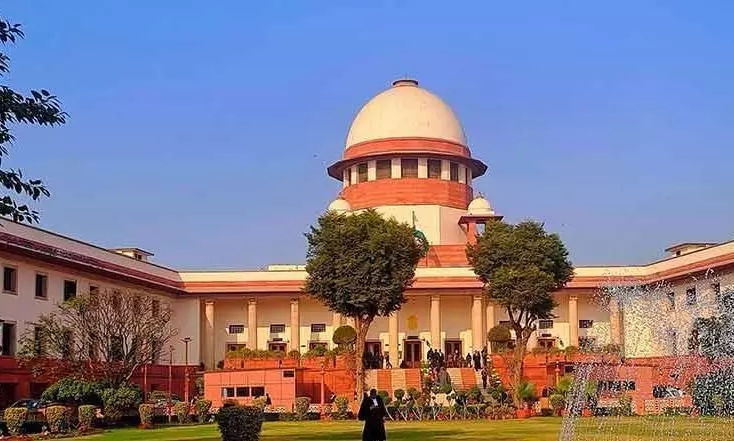SC Upholds Use Of Urdu On Maha Municipal Signboard, Calls Language A Unifying Cultural Force
The court emphasised that Urdu, like Marathi and Hindi, is an Indo-Aryan language born on Indian soil and enriched over centuries. It added that the idea of associating Urdu with a particular religion is misguided and historically rooted in colonial attempts to divide communities.

NEW DELHI: The Supreme Court upheld the use of Urdu on a municipal signboard in Maharashtra and dismissed a plea challenging it, calling the notion that Urdu is exclusively a language of Muslims a "pitiable digression from reality".
A bench comprising Justices Sudhanshu Dhulia and K. Vinod Chandran described Urdu as the "finest specimen of Ganga-Jamuni tehzeeb" — a symbol of India's composite cultural ethos. “Language is culture. Language is the yardstick to measure the civilisational march of a community and its people,” the bench stated.
The court was hearing a plea filed by Varshatai, a former councillor from Patur in Maharashtra’s Akola district, who challenged the use of Urdu, alongside Marathi, on the name board of the local municipal council. She argued that all municipal work must be conducted in Marathi, and even symbolic usage of Urdu on official signboards was impermissible.
Rejecting the argument, the apex court noted that the municipal council had retained Urdu on the signboard solely to facilitate better communication with local residents, many of whom understand the language. "All the municipal council wanted to do was to make effective communication,” the bench observed.
The court emphasised that Urdu, like Marathi and Hindi, is an Indo-Aryan language born on Indian soil and enriched over centuries. It added that the idea of associating Urdu with a particular religion is misguided and historically rooted in colonial attempts to divide communities. "Hindi became more Sanskritised, Urdu more Persianised — a schism exploited by colonial powers to divide languages along religious lines,” the court noted.
“Prejudice against Urdu stems from the misconception that it is alien to India. This is incorrect. Over the centuries, it became the language of choice for many acclaimed poets,” the court said.
Highlighting the linguistic interdependence, the bench added, “It would not be incorrect to say that one cannot have a day-to-day conversation in Hindi without using words of Urdu or those derived from it. Even the word ‘Hindi’ originates from the Persian word ‘Hindavi’.”
The court stressed that language should act as a bridge, not a barrier. “If people within the municipal area are familiar with Urdu, there should be no objection to using it alongside the official language. Language is a tool for uniting people with diverse beliefs and should not become a source of division,” it said.
In its concluding remarks, the court urged for a broader appreciation of India’s linguistic diversity: “Our misconceptions and prejudices against a language have to be courageously and truthfully tested against reality. Our strength can never be our weakness. Let us make friends with Urdu — and every language.”

